One little bird is standing out from the over-300 species of hummingbird that exist on planet Earth for a dazzling feature: its iridescent bright blue and green plumage that looks like a cloak made of sequins. This tiny jewel seems like it’s flown straight out of the pages of a fairytale.
The male crowned woodnymph (Thalurania colombica) wears bright green on its head, throat, and breast. The rest of its body is colored in a shimmering deep blue, with a dark blue forked tail.
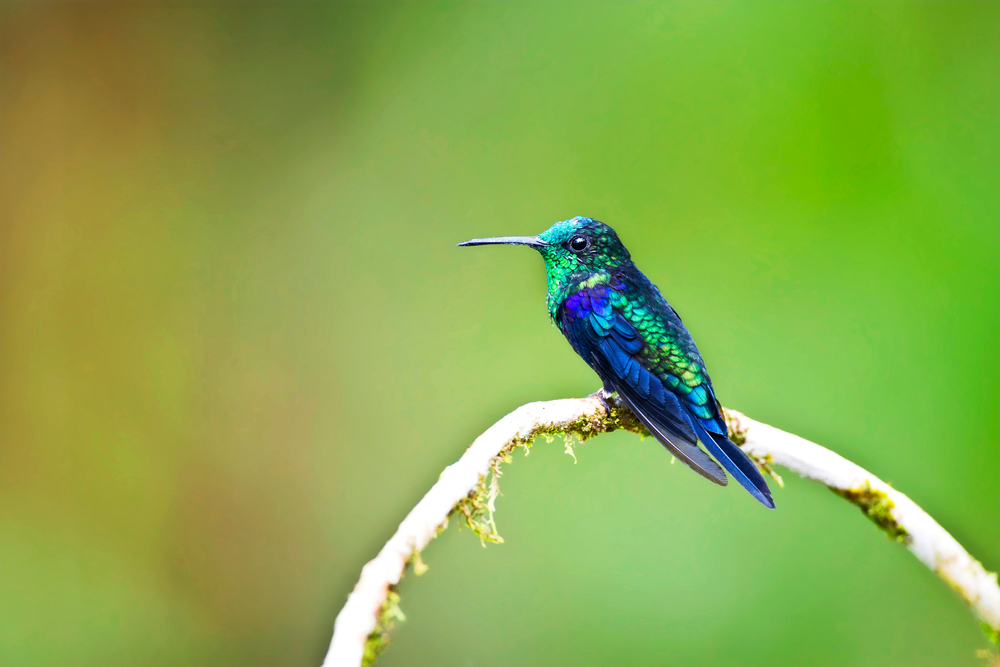
The female’s plumage is equally beautiful yet more subdued, with a gray-hued throat and breast, green flecks on the belly, and a smokey blue tail with white tips. Adults measure roughly 10 centimeters (4 inches) in length and weigh just 4.5 grams (0.15 ounces).
Native to Belize, Guatemala, through Central America, and down into Columbia and Peru, the crowned woodnymph prefers the humidity of wet lowland forests, subtropical and tropical moist montane forests. They tend to migrate to higher altitudes outside of the breeding season, yet breeding is the only time these little birds, who do not “pair bond,” deviate from their otherwise solitary lifestyles.
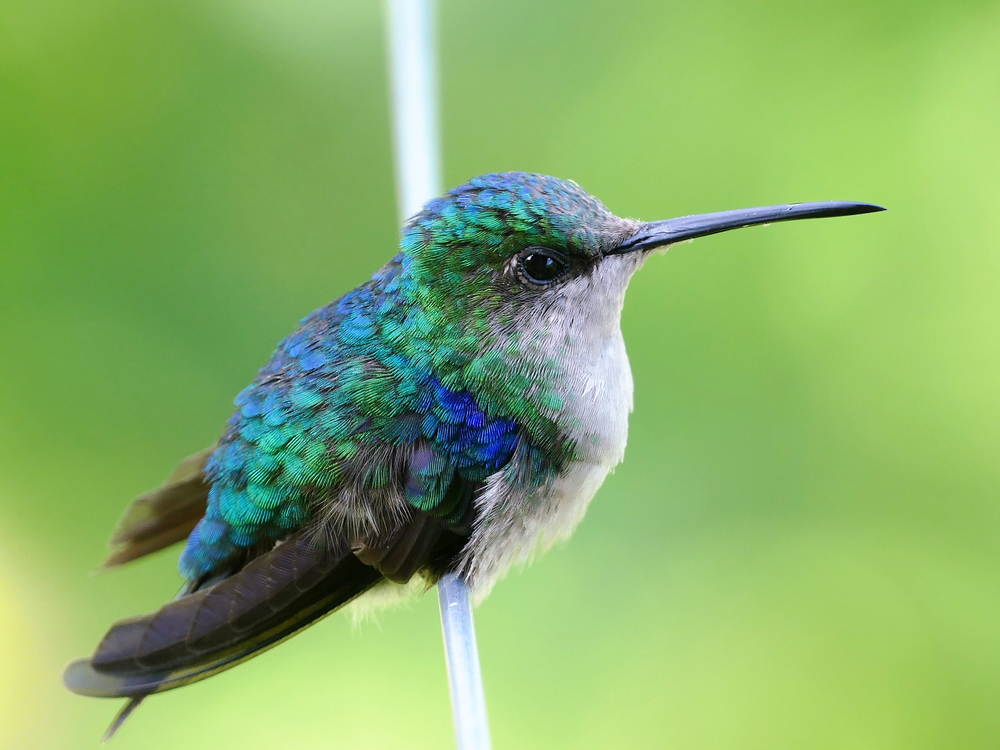
After commanding attention with a U-shaped flying display, the male will mate with a female woodnymph, sometimes multiple females, before leaving her to build a nest from moss and plant fibers and raise the chicks by herself.
The male will then busy himself defending his territory against “intruders,” such as bumblebees and hawk moths, with intimidating flight displays instead. However, the industrious female manages just fine alone, even incorporating spider webbing to elasticate the structure of the nest to allow it to stretch as her baby chicks grow, according to Beauty of Birds.
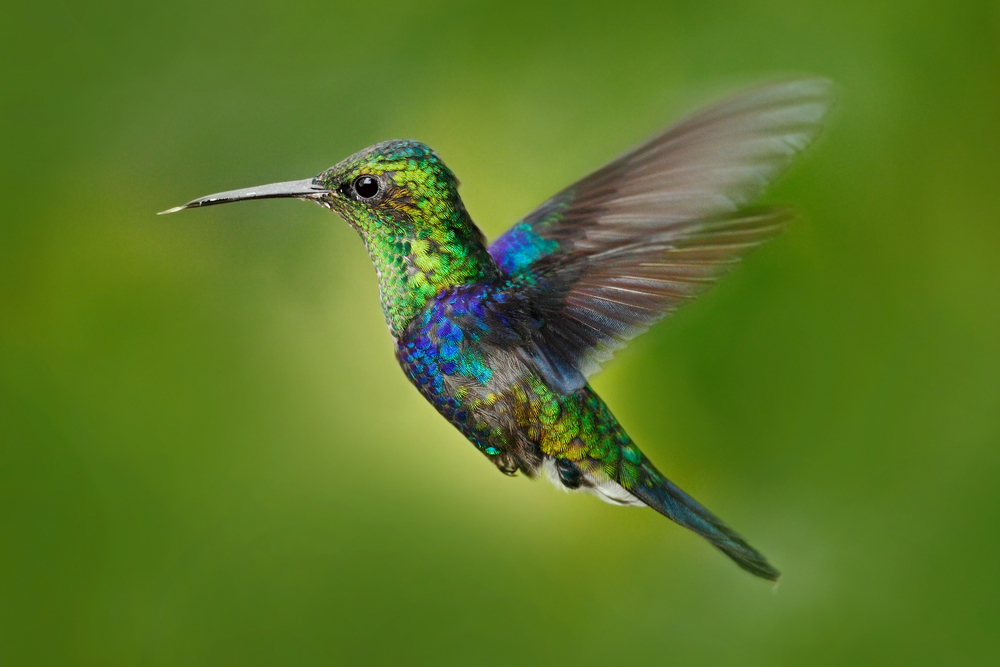
The female species will tend to her chicks for about two weeks, usually two per brood, feeding them regurgitated insects for a high source of protein as they grow.
With her long bill, the female species even push the food in the chicks’ throats directly down into their stomachs. It is known that a nesting female can catch up to 2,000 insects per day.
Fledgling woodnymphs leave the nest at 20–26 days of age. Using their long, straw-like tongues, they will go on to seek sugary nectar from the bright, scented flowers of trees, shrubs, and herbs as their major food source.
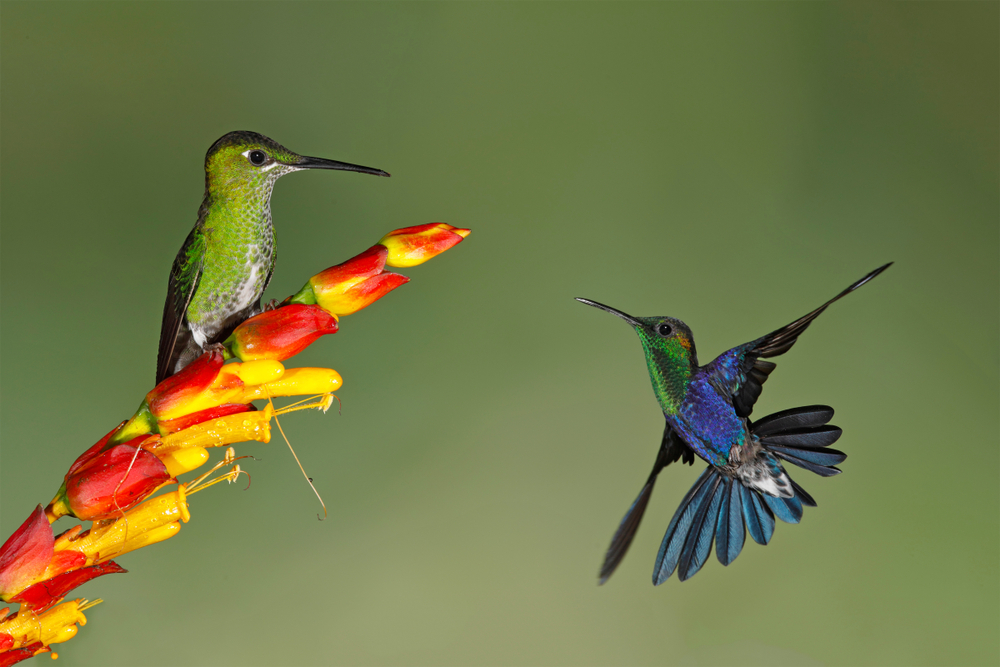
Like others of the hummingbird species, who are among the smallest of all birds, crowned woodnymphs have the ability to hover in the air as they feed. Their wings hum as they flutter—approximately 50 times per second, according to Birds and Blooms.
Their appetite for sweet nectar also makes these tiny birds of phenomenal benefit to plant pollination.
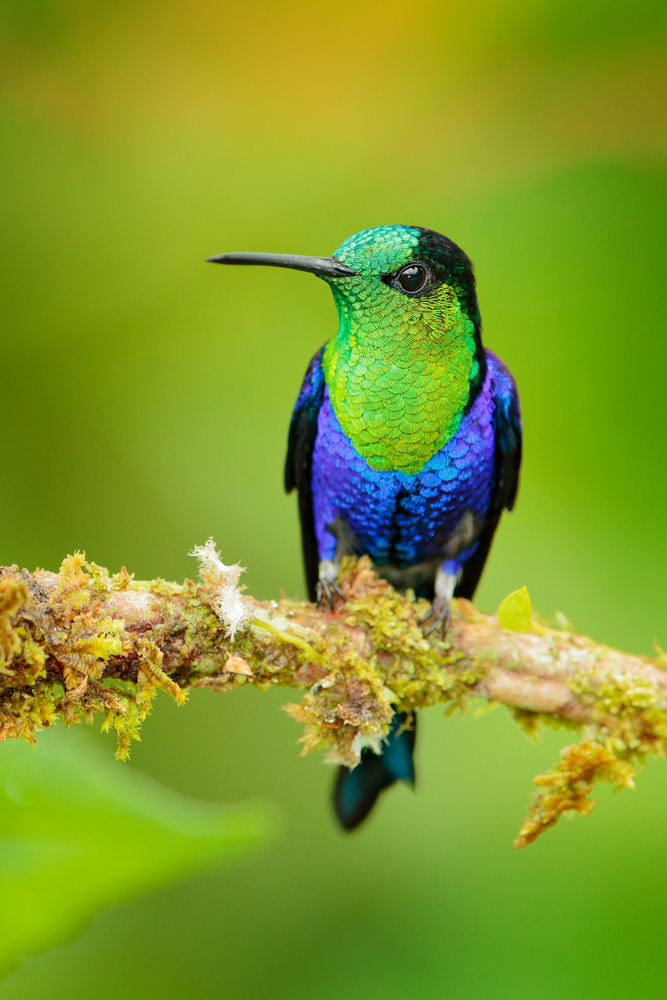
Crowned woodnymph, as a species, is thriving. They are classified on the IUCN Red List as of “least concern,” giving their blue-green “sequinned” plumage the chance to dazzle both now and into the future.
Share your stories with us at emg.inspired@epochtimes.com, and continue to get your daily dose of inspiration by signing up for the Epoch Inspired newsletter at TheEpochTimes.com/newsletter

Louise Bevan is a writer, born and raised in London, England. She covers inspiring news and human interest stories.
- Home
- Content Marketing
- Digital Marketing Strategy
- Landing page
- News
- PPC
- SEO
- Social media
- WordPress web development


